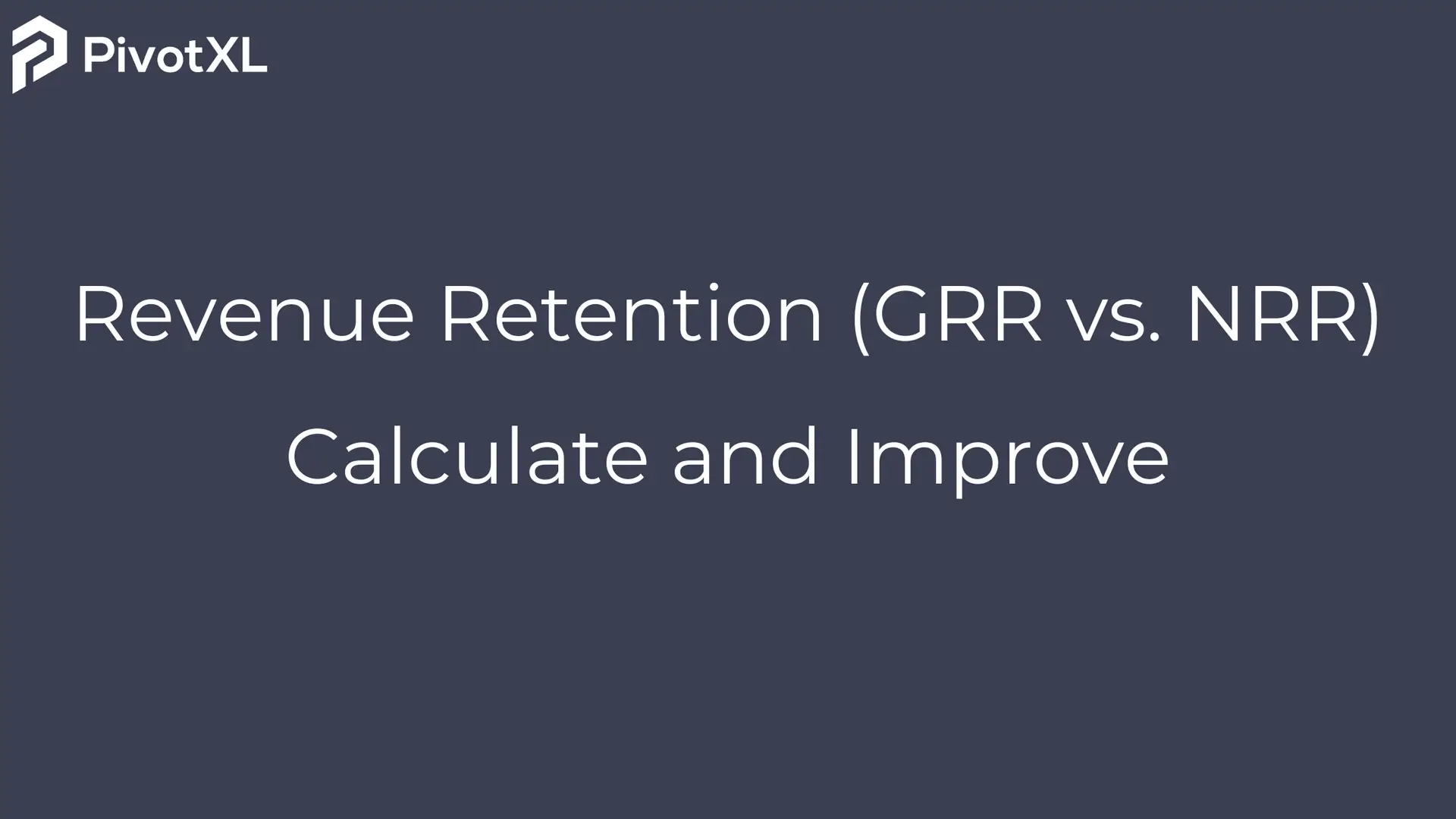What Is Revenue Retention?
Revenue retention measures the percentage of revenue a business keeps from its existing customer base over a specific period. Unlike revenue growth, which includes new customer acquisitions, revenue retention solely focuses on current customers.
It can be tracked across various timeframes:
- Monthly
- Quarterly
- Yearly
- Weekly/Daily (for businesses with short sales cycles)
Why Revenue Retention Matters
Customer acquisition costs can be 5 to 25 times higher than retention costs. This makes revenue retention a vital profitability and sustainability metric for businesses, especially those in SaaS, subscription-based industries, and B2B enterprises.
A company with high revenue retention has:
- Stronger financial stability
- Better long-term profitability
- Higher customer lifetime value (LTV)
- A more predictable revenue runway
Why Not Just Track Customer Retention?
Many businesses focus on customer retention (also called “logo retention”), but this doesn’t always reflect revenue stability.
Consider two customers:
- Customer A contributes 30% of your revenue.
- Customer B contributes 0.05% of your revenue.
Losing Customer A is far more significant than losing Customer B, even though they both count as a single churned customer.
This is why tracking revenue retention (GRR & NRR) alongside customer retention provides a more accurate financial picture.
Gross Revenue Retention (GRR) vs. Net Revenue Retention (NRR)
What Is Gross Revenue Retention (GRR)?
GRR is the percentage of revenue retained from existing customers, excluding expansions or upsells. It tells you how much revenue remains after accounting for churn and downgrades (contractions).
Formula for GRR:
GRR = ((Starting Revenue – Churn – Downgrades) / Starting Revenue) * 100
Where:
- MRR(Start) = Monthly Recurring Revenue at the beginning of the period
- Churn = Revenue lost from customers who left
- Contractions = Revenue lost from customers who downgraded
Example Calculation for GRR
Assume the following:
- Starting MRR = $100,000
- Churn = $5,000 (lost customers)
- Contractions = $5,000 (downgrades)
GRR = (100,000 – 10,000) / 100,000 × 100 = 90%
What GRR Tells You
GRR is a stability metric. If GRR is low, it may indicate:
- Customers aren’t seeing long-term value.
- Poor product experience or support.
- Customers are downgrading instead of expanding.
A strong GRR (90%+) means customers are staying, which is a sign of product-market fit and customer satisfaction.
What Is Net Revenue Retention (NRR)?
NRR (also called Net Dollar Retention, NDR) measures the total revenue retained from existing customers, including upsells and expansions.
Formula for NRR:
NRR = ((Starting Revenue + Upsells – Churn – Downgrades) / Starting Revenue) * 100
Where:
- Expansions = Additional revenue from existing customers upgrading their plans or buying more services
- Churn & Contractions = Revenue lost from cancellations or downgrades
Example Calculation for NRR
Using the same scenario, but now adding expansions:
- Expansions = $10,000 (customers upgrading)
- Churn & Contractions = $10,000
NRR = (100,000 + 10,000 – 10,000) / 100,000 × 100 = 100%
What NRR Tells You
✅ NRR > 100% → Revenue growth from existing customers (ideal scenario)
⚠ NRR = 100% → Flat growth (revenue lost is equal to revenue gained)
🚨 NRR < 100% → Revenue decline (customers are churning faster than they expand)
A high NRR indicates strong customer relationships and an effective expansion strategy.
Comparing GRR & NRR: When to Use Each
| High NRR | Low NRR | |
|---|---|---|
| High GRR | ✅ Great! Keep scaling. | ⚠ Low growth—improve expansion strategy. |
| Low GRR | ❌ Unlikely scenario—double-check data. | 🚨 Major issues—fix churn & retention. |
How to Improve GRR vs NRR
Strategies to Improve Gross Revenue Retention (GRR)
- Enhance Customer Experience – Poor support is a leading churn factor.
- Build Customer Trust – Loyal customers are 82% more likely to repurchase.
- Increase Product Stickiness – Integrations and usage-based pricing help retain users.
Strategies to Improve Net Revenue Retention (NRR)
- Offer Valuable Upgrades – Higher tiers must offer meaningful benefits.
- Implement Customer Expansion Strategies – Cross-sell & upsell effectively.
- Improve Customer Service – 66% of customers will pay more for better service.
Industry-Specific GRR & NRR Strategies
- SaaS & Subscription Businesses – Optimize pricing models and reduce churn.
- Retail & eCommerce – Use loyalty programs and membership incentives.
- Real Estate & Property Management – Offer flexible leasing and long-term benefits.
- Healthcare – Improve patient engagement through superior service.
Final Thoughts on Revenue Retention
Understanding GRR vs NRR is critical for businesses focused on sustainable growth and customer success. Both metrics provide valuable insights into customer loyalty, revenue stability, and long-term profitability.
Tracking these key revenue retention KPIs alongside customer churn data allows businesses to develop better growth strategies and minimize risk.
For businesses looking to streamline their revenue analytics and FP&A processes, PivotXL provides a powerful, cloud-based financial planning and analysis (FP&A) solution, seamlessly integrated with Excel.
Start leveraging better revenue retention strategies today to maximize long-term success!




